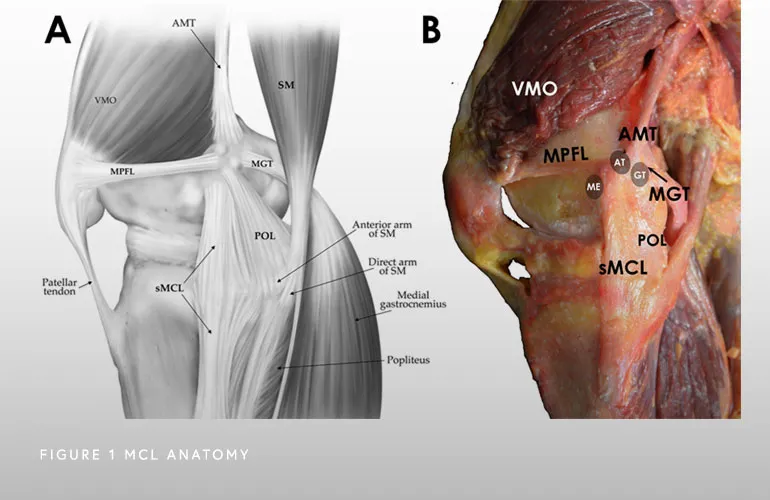Medial Collateral Ligament (MCL)
What is the MCL? Where is the MCL located?
The medial collateral ligament (MCL) is a structure that stabilizes the medial side (inside) of the knee, connecting the thigh bone (femur) to the shinbone (tibia), and prevents forces applied to the lateral (outside) side of the knee from gapping open the inside of the knee. Overall, MCL tears are two to three times more common than ACL tears.
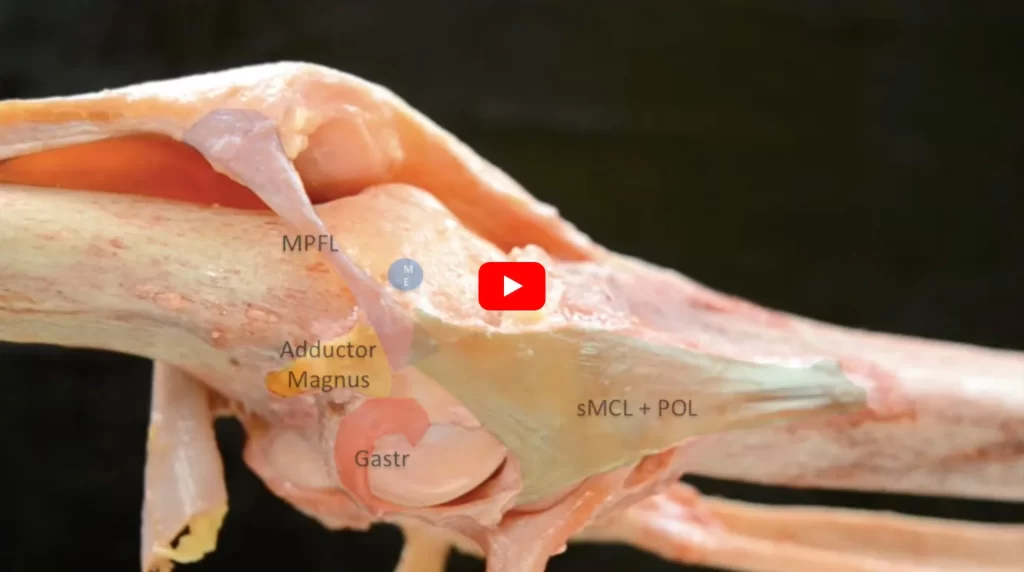
What is the posteromedial corner of the knee?
There are two primary structures that comprise the posteromedial corner of the knee: the MCL and posterior oblique ligament (POL). Both structures control stability and gapping of the inside of the knee (valgus) and tibial (shin bone) rotation relative to the femur (thigh bone).
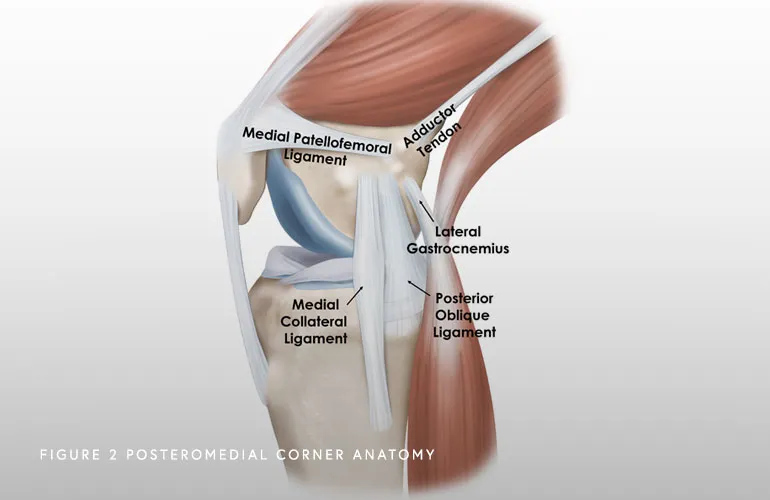
How does the posteromedial corner work?
The MCL and the POL prevent the knee from gapping open when the tibia (shine bone) internally rotates. The MCL functions when knee is slightly flexed (20 to 30 degrees of flexion) whereas the POL (more to the back of the knee) functions close to extension (0 degrees of flexion). This different roles help ensure stability throughout a full range of motion.
How do posteromedial corner injuries occur?
MCL injuries can result from twisting injuries, causing the knee to buckle and gap open on the inside of the knee (valgus gapping). MCL injuries can also result from contact injuries, like a blow to the outside (lateral) side of the knee, causing valgus gapping. MCL injuries are very common with almost 750.000 injuries occurring every year in the United States.
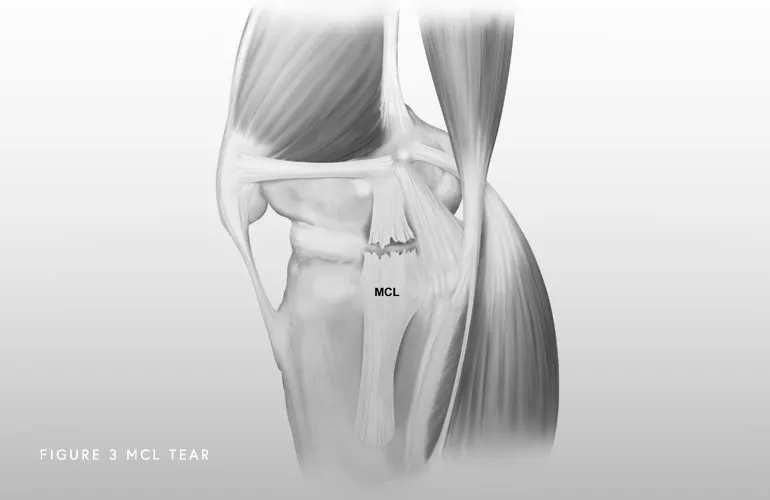
What are the symptoms of an MCL tear?
Symptoms depend on the severity of the injury. A mild injury (grade I or II) might present with pain over the ligament attachments (either on the tibia or femur). Swelling and inflammation over the inside (medial) part of the knee can also be present. In more severe cases, patients feel that their knee can give out or buckle.
Do posteromedial corner injuries of the knee heal on their own?
Isolated MCL tears commonly heal on their own because they have a very robust supply of blood flow and nutrients (irrigation). Additionally, this ligament is outside the knee joint capsule (outside the lining of the joint). Proteins within the joint fluid inhibit healing (as with ACL tears); therefore, being outside the joint is beneficial for healing. Moreover, on the inside of the knee, the convex (rounded) end of the femur articulates with a concave (bowl-shapped) tibia, which allows for a more stable joint. However, there are two situations in which it will not heal. First, if the knee gaps open on the outside when the knee is fully extended (valgus gapping in extension), the likelihood of the MCL healing without surgery is very low as the POL is usually injured. The second type of injury requiring surgery is a tear of the MCL tibial (shin bone) attachment that retracts toward the knee. This is called a meniscotibial MCL tear. These types of tears also usually don’t heal on their own. This is because the torn and retracted MCL becomes trapped above the hamstrings tendons, and it cannot heal back down to the tibia (shin bone). In both of these types of injuries, the knee will feel very unstable to outward pressure (valgus force) when assessed by a physician.
What is the most accurate way to diagnose a posteromedial corner injury?
A combination of a comprehensive physical examination, special x-rays, and magnetic resonance imaging are usually very accurate. We will test your knee in an extended (straight) and flexed position to determine the location and severity of the injury. One special test that we will perform to determine the severity of your pathology are stress x-rays. These special x-rays allows us to objectively quantify and diagnose (based on validated systems) a posteromedial corner injury with millimeter accuracy.
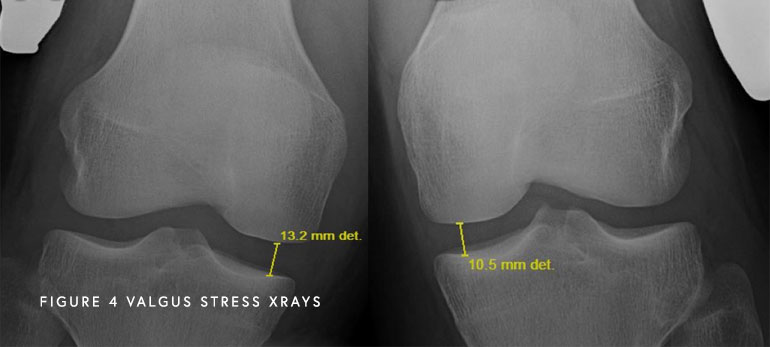
What is the best time to fix a posteromedial corner injury?
Usually Grade 1 and 2 tears can be treated non-operatively with physical therapy and a brace. Grade 3 tears are almost always treated with surgery. When there is a complete tear of the MCL or when all the structures of the posteromedial corner of the knee are injured, surgery should be performed within two weeks after injury, and once range of motion has been recovered. This is the best time to repair the structures, before significant scarring occurs or the tissues become weakened. The position and alignment of the knee can also be anatomically restored (brought back to the normal state) during that time frame, rather than delaying and allowing the knee to heal in an abnormal position. Recent reconstruction techniques have allowed many patients to get back to high-level activities. activities because of ongoing knee problems.
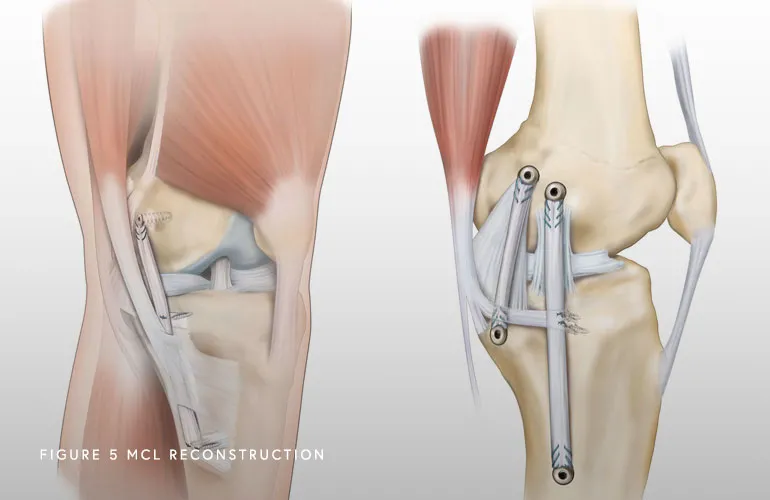
How is the posteromedial corner fixed?
We believe that restoring the anatomy (putting everything where it belongs) can produce better outcomes. There are multiple techniques described including augmentation procedures (meaning that a graft is utilized to supplement your own tissue) or full reconstruction (where grafts are used to reconstruct all the components of your posteromedial corner / MCL and POL). Regardless, we perform techniques that restore all the native insertions of the posteromedial corner which allows for early range of motion and has been proven to result in excellent outcomes.
How long is the recovery?
Depending on the severity of the injury and the associated ligaments injured, recovery can take between 6 and 12 months. Physical therapy starts on day 1 to work on range of motion. Patients should not bear weight (or very little weight bearing) for the first six weeks after injury. They then initiate a partially protected weight-bearing program (with crutches) at the six-week point and may wean off of crutches when they can walk without a limp. Driving on the operative knee is usually allowed at about seven to eight weeks postoperatively. Endurance and strengthening can be started in the second phase of the rehabilitation. Agility exercises start at 4 months along with the running progression if previous stages have been successfully achieved. Although return to sports changes between patients, it should be allowed at approximately 9 to 12 months.
At a Glance
Dr. Jorge Chahla
- Triple fellowship-trained sports medicine surgeon
- Performs over 500 surgeries per year
- Assistant professor of orthopedic surgery at Rush University
- Learn more


